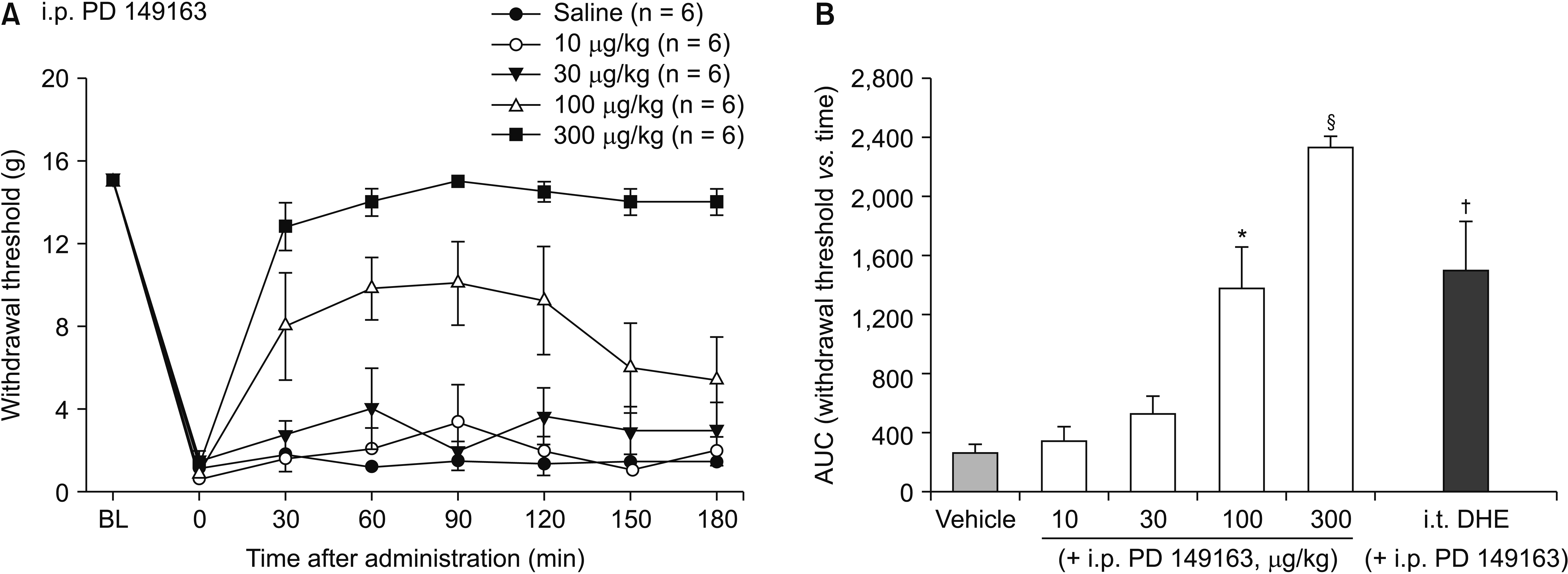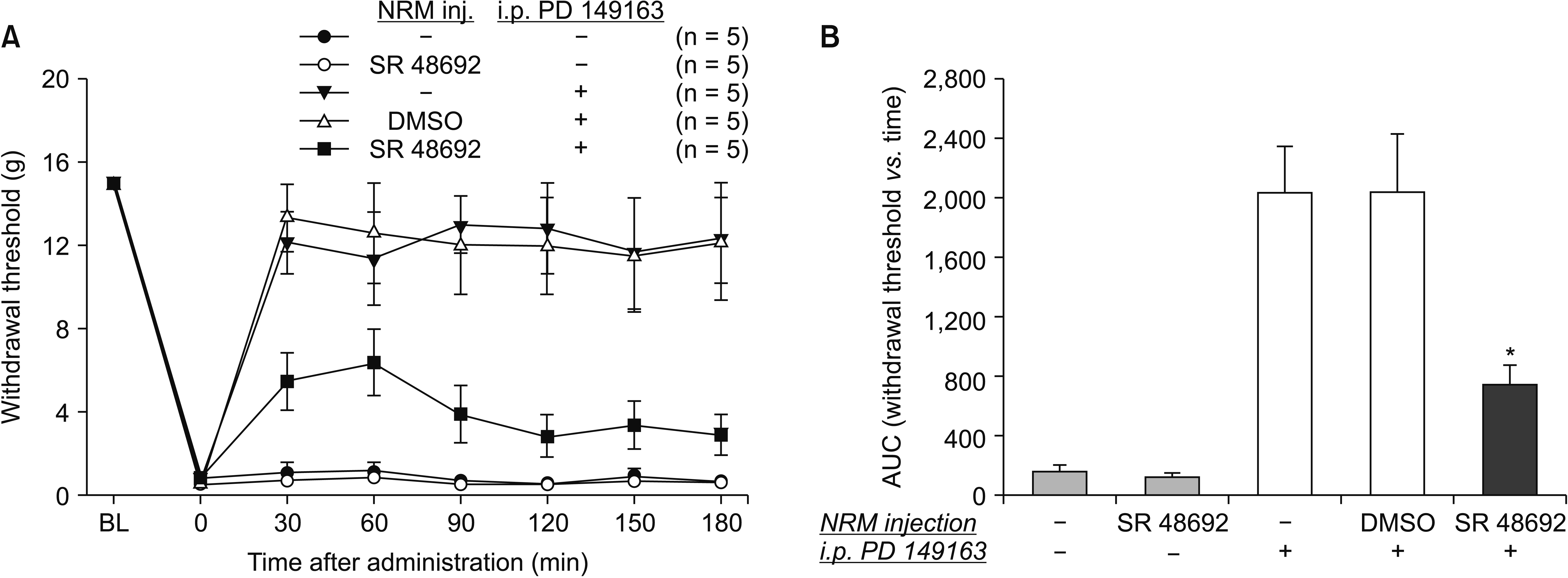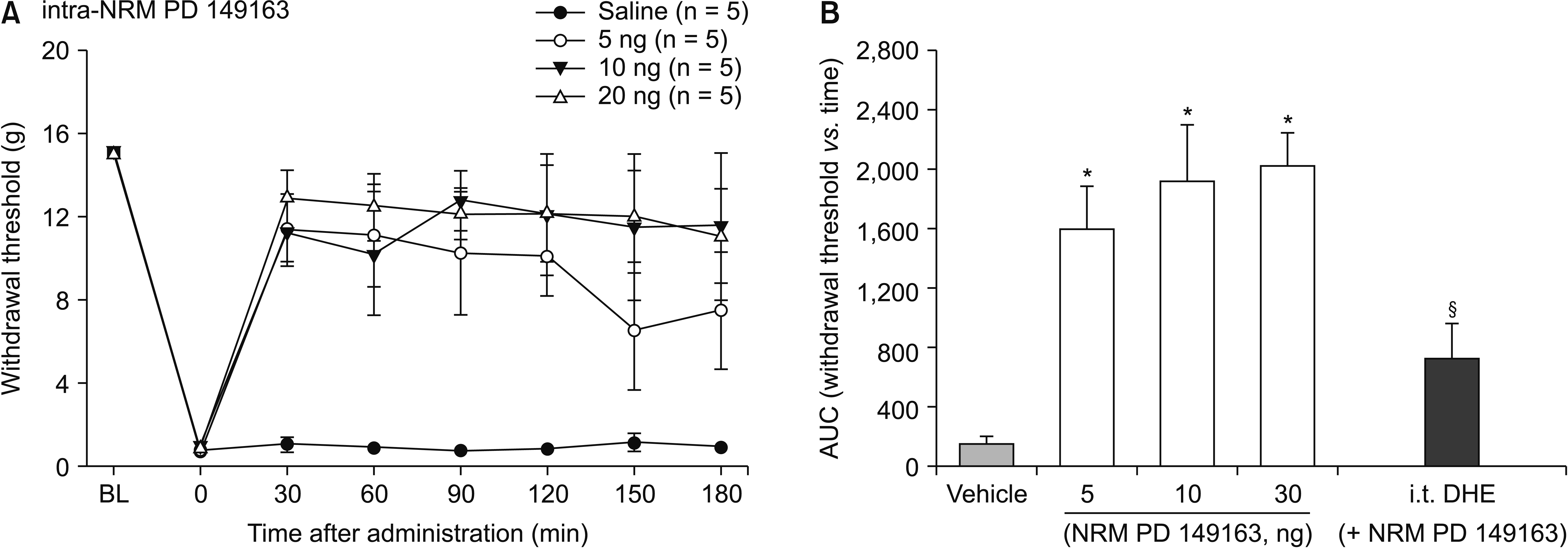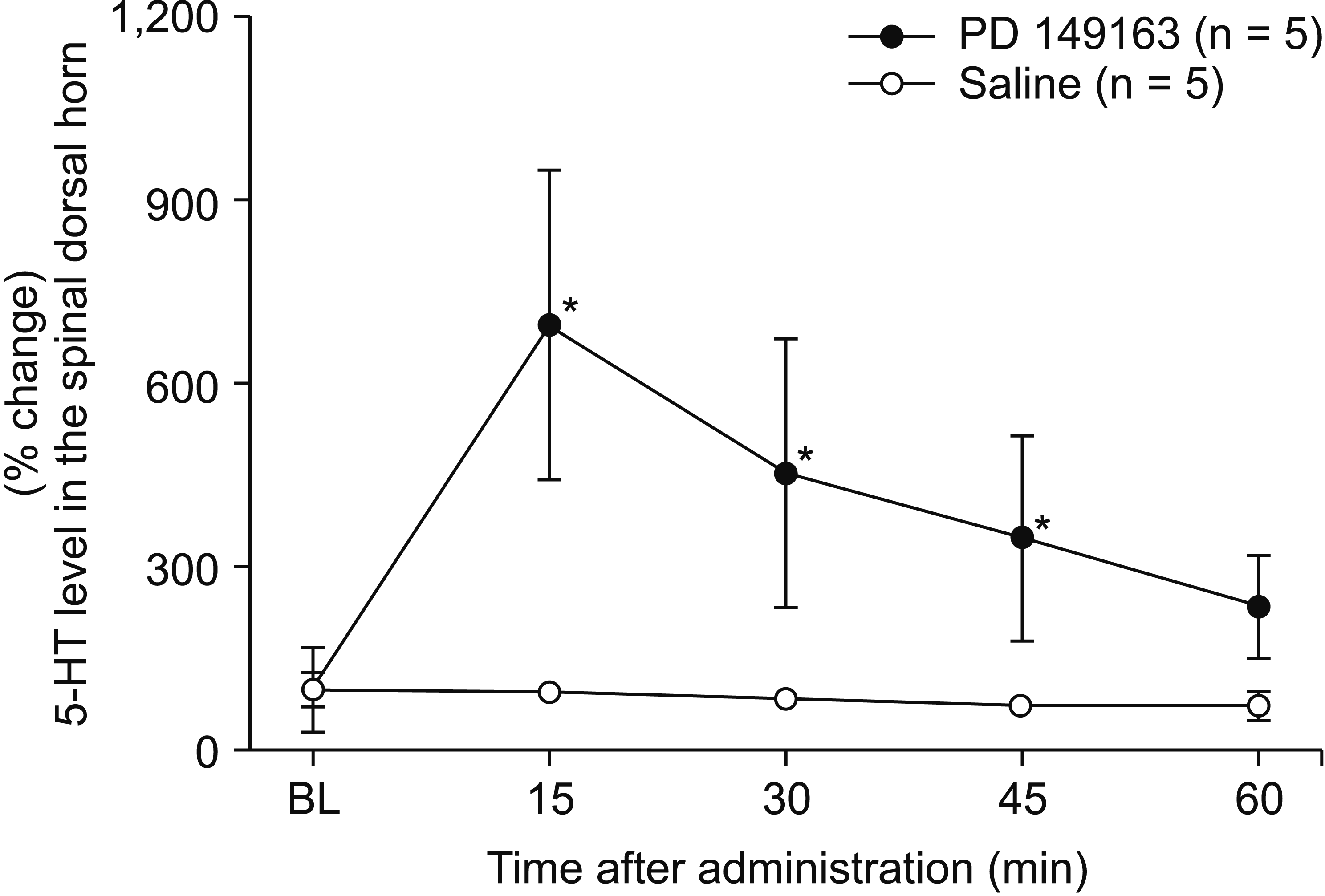1. Carraway R, Leeman SE. 1973; The isolation of a new hypotensive peptide, neurotensin, from bovine hypothalami. J Biol Chem. 248:6854–61. PMID:
4745447.

2. Mustain WC, Rychahou PG, Evers BM. 2011; The role of neurotensin in physiologic and pathologic processes. Curr Opin Endocrinol Diabetes Obes. 18:75–82. DOI:
10.1097/MED.0b013e3283419052. PMID:
21124211.

3. Boules M, Li Z, Smith K, Fredrickson P, Richelson E. 2013; Diverse roles of neurotensin agonists in the central nervous system. Front Endocrinol (Lausanne). 4:36. DOI:
10.3389/fendo.2013.00036. PMID:
23526754. PMCID:
PMC3605594.

4. Kleczkowska P, Lipkowski AW. 2013; Neurotensin and neurotensin receptors: characteristic, structure-activity relationship and pain modulation--a review. Eur J Pharmacol. 716:54–60. DOI:
10.1016/j.ejphar.2013.03.004. PMID:
23500196.

5. Fassio A, Evans G, Grisshammer R, Bolam JP, Mimmack M, Emson PC. 2000; Distribution of the neurotensin receptor NTS1 in the rat CNS studied using an amino-terminal directed antibody. Neuropharmacology. 39:1430–42. DOI:
10.1016/S0028-3908(00)00060-5. PMID:
10818259.

6. Buhler AV, Choi J, Proudfit HK, Gebhart GF. 2005; Neurotensin activation of the NTR1 on spinally-projecting serotonergic neurons in the rostral ventromedial medulla is antinociceptive. Pain. 114:285–94. DOI:
10.1016/j.pain.2004.12.031. PMID:
15733655.

7. Roussy G, Dansereau MA, Doré-Savard L, Belleville K, Beaudet N, Richelson E, et al. 2008; Spinal NTS1 receptors regulate nociceptive signaling in a rat formalin tonic pain model. J Neurochem. 105:1100–14. DOI:
10.1111/j.1471-4159.2007.05205.x. PMID:
18182046.

8. Guillemette A, Dansereau MA, Beaudet N, Richelson E, Sarret P. 2012; Intrathecal administration of NTS1 agonists reverses nociceptive behaviors in a rat model of neuropathic pain. Eur J Pain. 16:473–84. DOI:
10.1016/j.ejpain.2011.07.008. PMID:
22396077.
9. Holmes BB, Rady JJ, Smith DJ, Fujimoto JM. 1999; Supraspinal neurotensin-induced antianalgesia in mice is mediated by spinal cholecystokinin. Jpn J Pharmacol. 79:141–9. DOI:
10.1254/jjp.79.141. PMID:
10202849.

10. Urban MO, Smith DJ. 1994; Localization of the antinociceptive and antianalgesic effects of neurotensin within the rostral ventromedial medulla. Neurosci Lett. 174:21–5. DOI:
10.1016/0304-3940(94)90109-0. PMID:
7970148.

11. Smith DJ, Hawranko AA, Monroe PJ, Gully D, Urban MO, Craig CR, et al. 1997; Dose-dependent pain-facilitatory and -inhibitory actions of neurotensin are revealed by SR 48692, a nonpeptide neurotensin antagonist: influence on the antinociceptive effect of morphine. J Pharmacol Exp Ther. 282:899–908. PMID:
9262357.
12. Urban MO, Coutinho SV, Gebhart GF. 1999; Biphasic modulation of visceral nociception by neurotensin in rat rostral ventromedial medulla. J Pharmacol Exp Ther. 290:207–13. PMID:
10381777.
13. Kim SH, Chung JM. 1992; An experimental model for peripheral neuropathy produced by segmental spinal nerve ligation in the rat. Pain. 50:355–63. DOI:
10.1016/0304-3959(92)90041-9. PMID:
1333581.

14. Koh GH, Song H, Kim SH, Yoon MH, Lim KJ, Oh SH, et al. 2019; Effect of sec-O-glucosylhamaudol on mechanical allodynia in a rat model of postoperative pain. Korean J Pain. 32:87–96. DOI:
10.3344/kjp.2019.32.2.87. PMID:
31091507. PMCID:
PMC6549587.

15. Chaplan SR, Bach FW, Pogrel JW, Chung JM, Yaksh TL. 1994; Quantitative assessment of tactile allodynia in the rat paw. J Neurosci Methods. 53:55–63. DOI:
10.1016/0165-0270(94)90144-9. PMID:
7990513.

16. Yin M, Kim YO, Choi JI, Jeong S, Yang SH, Bae HB, et al. 2020; Antinociceptive role of neurotensin receptor 1 in rats with chemotherapy-induced peripheral neuropathy. Korean J Pain. 33:318–25. DOI:
10.3344/kjp.2020.33.4.318. PMID:
32989196. PMCID:
PMC7532295.

17. Lee HG, Choi JI, Yoon MH, Obata H, Saito S, Kim WM. 2014; The antiallodynic effect of intrathecal tianeptine is exerted by increased serotonin and norepinephrine in the spinal dorsal horn. Neurosci Lett. 583:103–7. DOI:
10.1016/j.neulet.2014.09.022. PMID:
25233863.

18. Chae JW, Kang DH, Li Y, Kim SH, Lee HG, Choi JI, et al. 2020; Antinociceptive effects of nefopam modulating serotonergic, adrenergic, and glutamatergic neurotransmission in the spinal cord. Neurosci Lett. 731:135057. DOI:
10.1016/j.neulet.2020.135057. PMID:
32450186.

19. Paxinos G, Watson C. 2014. Paxinos and Watson's the rat brain in stereotaxic coordinates. 7th ed. Academic Press;London: p. 116–32.
20. Bodnar RJ, Wallace MM, Nilaver G, Zimmerman EA. 1982; The effects of centrally administered antisera to neurotensin and related peptides upon nociception and related behaviors. Ann N Y Acad Sci. 400:244–58. DOI:
10.1111/j.1749-6632.1982.tb31573.x. PMID:
6188400.

24. Fang FG, Moreau JL, Fields HL. 1987; Dose-dependent antinociceptive action of neurotensin microinjected into the rostroventromedial medulla of the rat. Brain Res. 420:171–4. DOI:
10.1016/0006-8993(87)90255-1. PMID:
3676752.

25. Costa-Pereira JT, Serrão P, Martins I, Tavares I. 2020; Serotoninergic pain modulation from the rostral ventromedial medulla (RVM) in chemotherapy-induced neuropathy: the role of spinal 5-HT3 receptors. Eur J Neurosci. 51:1756–69. DOI:
10.1111/ejn.14614. PMID:
31691396.








 PDF
PDF Citation
Citation Print
Print




 XML Download
XML Download